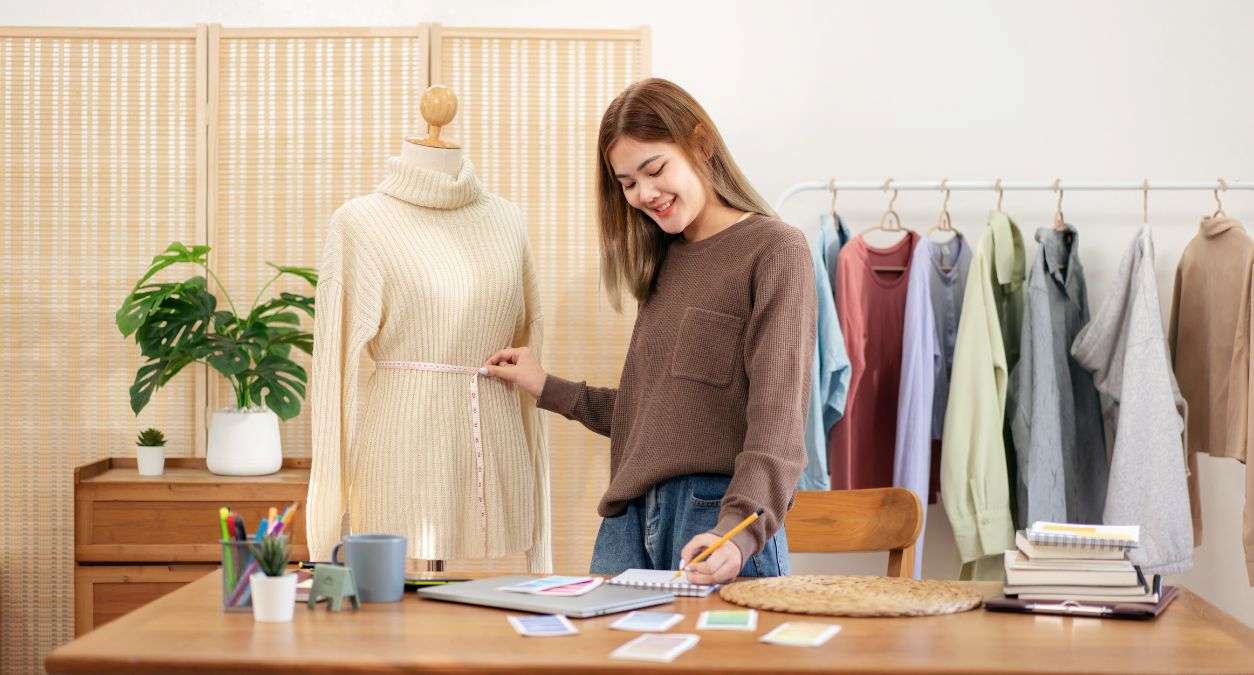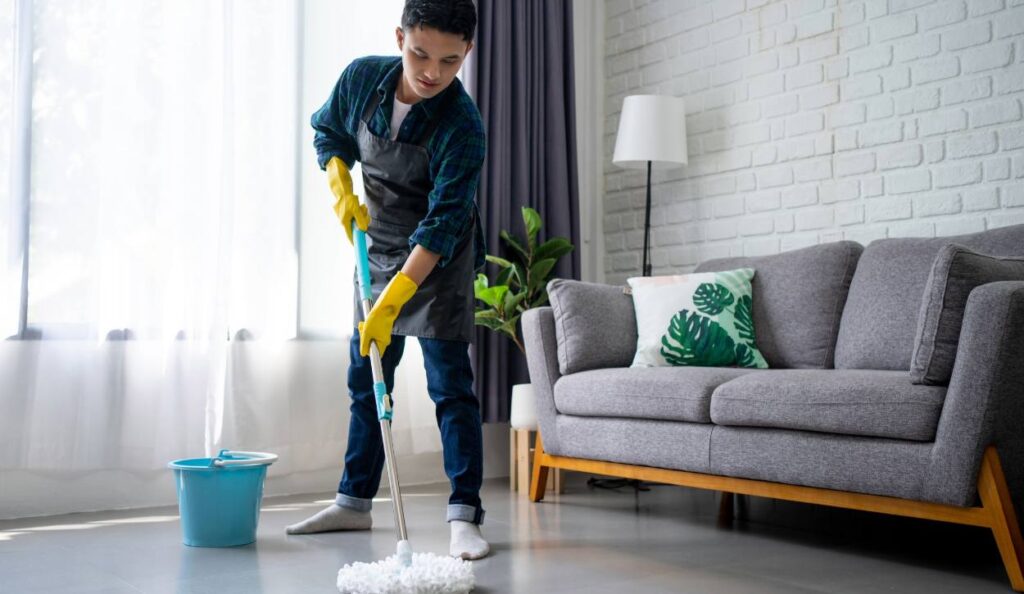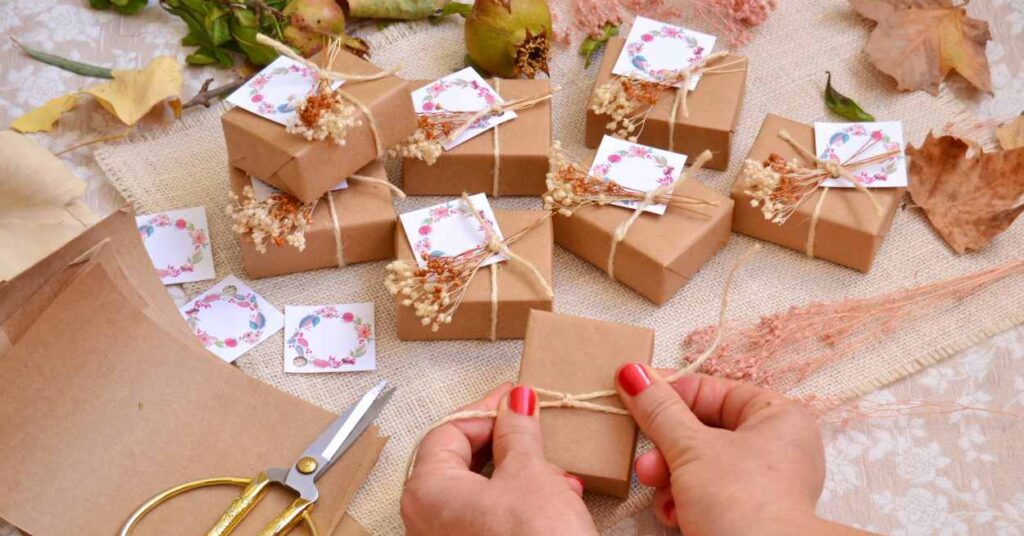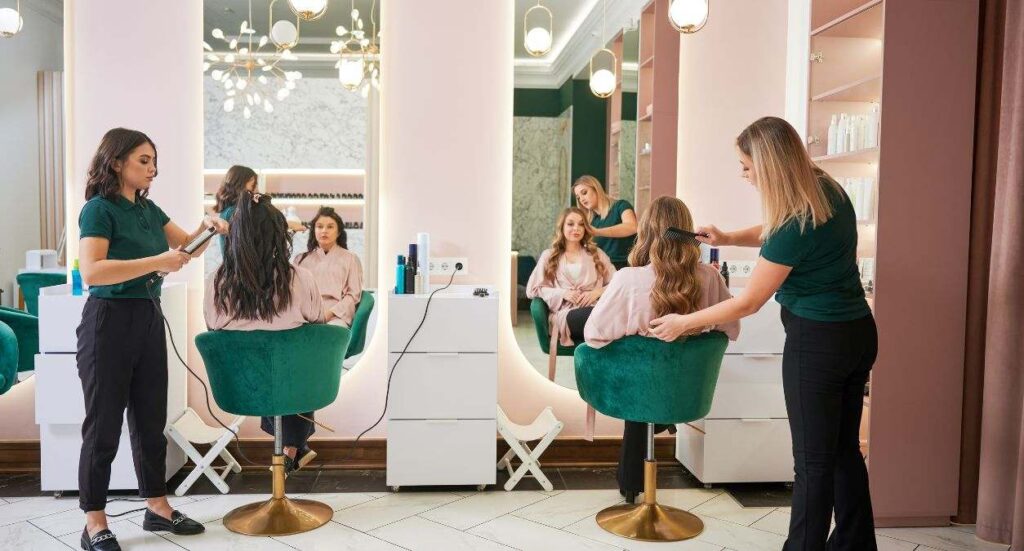Table of contents
Table of contents
In a world where sustainability is more than a buzzword, textile crafters have a powerful role to play in reshaping the fashion industry. Brands like H&M’s Conscious Collection, ASOS Eco Edit, and Everlane are showing how eco-friendly fashion can be accessible, affordable, and stylish. Whether you’re a small business owner, an independent maker, or just starting your handmade fashion journey, creating eco-friendly products isn’t just a trend – it’s a necessity. But how can you ensure your designs are kind to the planet without compromising on creativity or quality?
In this blog, we’ll explore how textile crafters can make eco fashion, the materials and processes that support sustainability, and practical eco-friendly fashion ideas to help your small business stand out.
What is eco-friendly fashion?
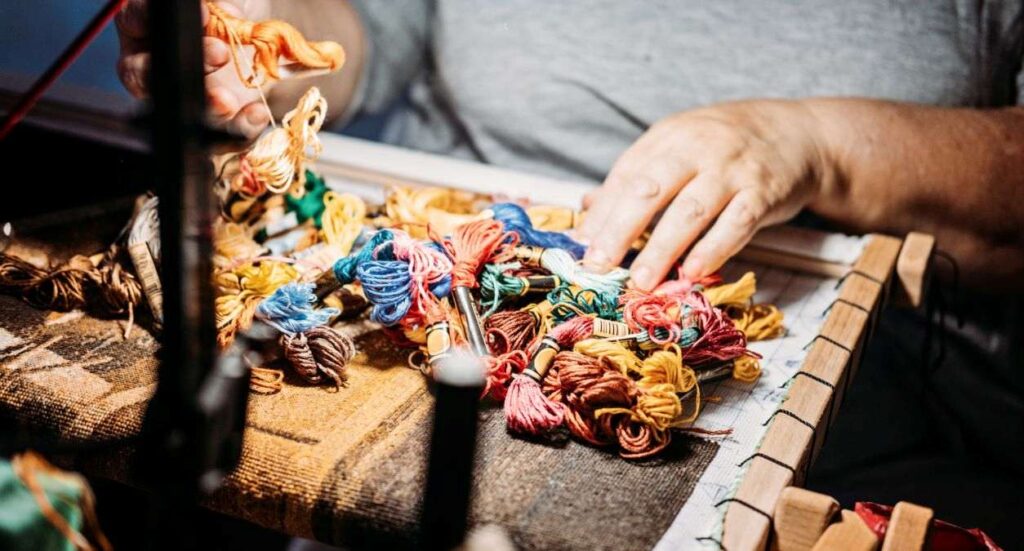
Eco-friendly fashion refers to clothing and accessories made in ways that reduce environmental harm. This means using eco-friendly fashion materials, sustainable processes, ethical labour practices, and packaging that leaves a minimal carbon footprint. The goal? Fashion that looks good, feels great, and supports the well-being of our planet.
As a crafter or small-scale textile designer, understanding what eco-friendly fashion is gives you the foundation to make smarter, greener choices every step of the way.
Why should textile crafters care about sustainability?
The fashion industry is one of the biggest polluters globally. From water consumption to chemical dyes and fast fashion waste, its impact is significant. Small businesses and crafters have the unique advantage of agility – they can implement eco-friendly changes more easily than large corporations.
Creating eco-friendly fashion products is not just good for the planet; it’s also good for business. Consumers are actively seeking sustainable alternatives and are more willing to support brands that align with their values.
Plus, if you’re a crafter, protecting your livelihood matters too. Having the right coverage like Crafters Insurance or Textile Manufacturer Insurance ensures your hard work is protected as you innovate sustainably.
How do you make fabric eco-friendly?
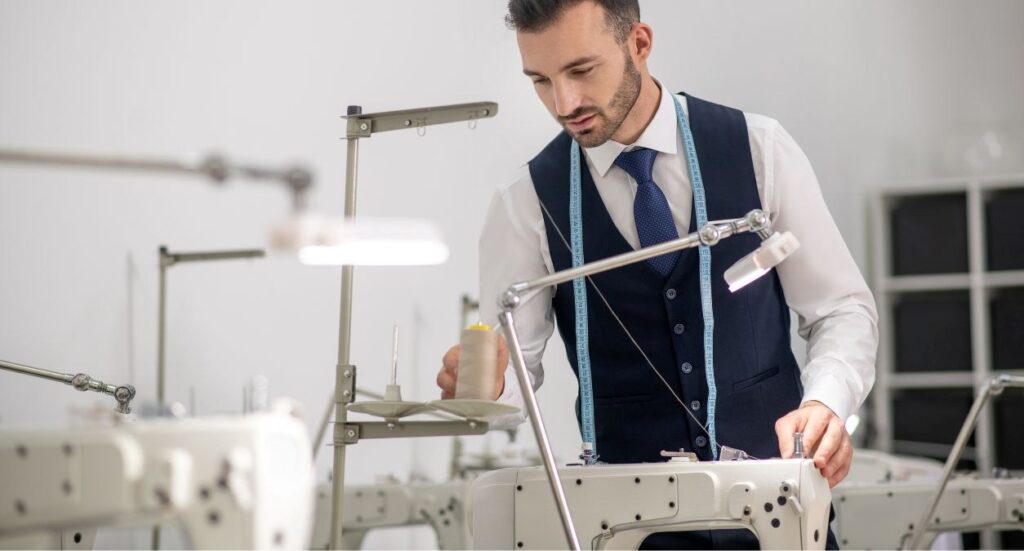
Let’s start at the source: the fabric itself.
To create eco fashion, opt for eco-friendly fabrics that are sustainably produced, biodegradable, or made from recycled materials. Here are some top choices:
1. Organic cotton
Unlike conventional cotton, organic cotton is grown without synthetic pesticides and uses far less water. It’s breathable, durable, and ideal for a wide range of textile crafts.
2. Hemp
Hemp grows quickly, requires little water, and naturally resists pests. It also improves soil health and creates strong, versatile fabric.
3. Linen (Flax)
Linen made from flax is another eco-winner. It’s biodegradable, requires minimal processing, and lasts for decades.
4. Bamboo (when processed sustainably)
Bamboo is fast-growing and doesn’t need replanting. However, avoid bamboo processed with harsh chemicals – look for “mechanically processed” bamboo or closed-loop bamboo rayon.
5. Recycled fabrics
Materials made from recycled PET bottles or repurposed textile waste reduce the demand for virgin resources and keep plastic out of landfills.
What are eco-friendly textile processes?
It’s not just what fabric you use, it’s how you treat and transform it. Consider these eco-friendly textile processes:
Natural dyes
Chemical dyes can be harmful to the environment. Switch to plant-based dyes or low-impact synthetic dyes certified by bodies like OEKO-TEX.
Low-waste pattern making
Use zero-waste or minimal-waste patterns to optimise fabric use and reduce offcuts.
Energy-efficient equipment
Choose machines that consume less energy or run on renewable sources. Use solar dryers or air drying when possible.
Water-conscious methods
Cut down on water usage during dyeing and washing stages. Look for waterless dye technologies or use recycled water systems.
Handmade over mass-produced
Handcrafting often uses fewer resources than large-scale factory production, especially when you keep transportation and packaging minimal.
How can we be more environmentally friendly when using textiles?
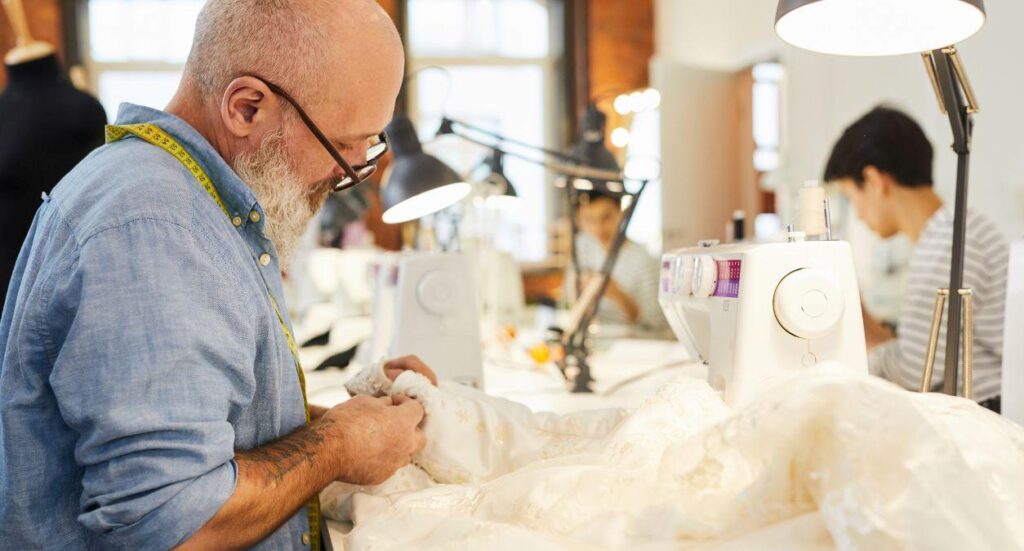
Beyond material choices and production methods, here are broader ways to be more environmentally responsible:
Source locally
Support local farms and textile producers to reduce your carbon footprint and boost your local economy.
Reuse and upcycle
Give new life to old fabrics, scraps, or second-hand materials. Patchwork, quilting, and fabric collage are creative ways to reduce waste.
Reduce inventory waste
Craft made-to-order or limited-run collections to avoid overproduction and deadstock waste.
Educate your customers
Share your eco-story on your labels, website, or packaging. Let your buyers know why your process is different—and greener.
What is eco-friendly fashion packaging?
Sustainability doesn’t stop with the product. How you package and ship your items also matters. Here are some ideas for eco-friendly fashion packaging:
✔ Compostable mailers
Made from corn starch or other biodegradable materials, these break down naturally after disposal.
✔ Recyclable paper wraps
Use kraft paper, recycled tissue, or fabric wraps instead of plastic.
✔ Plant-based inks
Use soy-based or vegetable-based inks for labelling and branding.
✔ Minimalist design
Avoid unnecessary wrapping or branding that leads to extra waste.
✔ Reusable packaging
Encourage customers to reuse boxes or return packaging for discounts or future use.
Eco-friendly fashion ideas for textile crafters
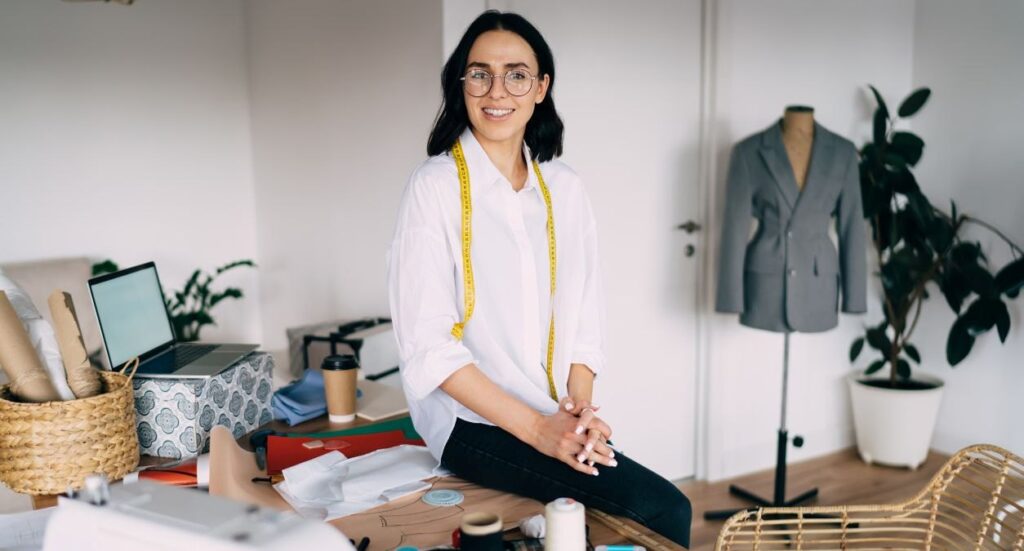
Need inspiration for your next sustainable collection? Try these:
- Zero-waste accessories: Headbands, scrunchies, or wallets made from fabric scraps.
- Custom-dyed scarves: Use natural dyes from turmeric, beets, or indigo.
- Upcycled denim bags: Repurpose old jeans into durable, stylish totes.
- Organic cotton babywear: A growing niche with strong demand.
- Sustainable fashion kits: Sell DIY kits with pre-cut eco fabrics and guides.
You don’t have to compromise your creativity to go green, in fact, sustainability can spark innovation.
How do you make eco fashion as a small business?
Creating eco-friendly fashion as a small business doesn’t require a massive overhaul, just intentional steps in the right direction. Here’s how to start integrating sustainable practices into your brand:
Start small
You don’t need to go 100% sustainable overnight. Begin by switching one product line to organic materials or introducing eco-friendly packaging. Small changes are manageable and add up over time.
Track your impact
Use basic carbon calculators or keep records of fabric waste saved through upcycling or zero-waste patterns. Knowing your footprint helps you improve and shows customers you’re committed.
Choose sustainable suppliers
Work with fabric and packaging suppliers who offer transparency and certified materials (like GOTS or OEKO-TEX). Local sourcing can also reduce emissions and support your community.
Get certified
Certifications like GOTS, OEKO-TEX, or Fair Trade boost your brand’s credibility. Even if you’re not certified, using certified materials is a step in the right direction.
Tell your story
Sustainability sells when it’s authentic. Share your process, challenges, and eco choices on your website, packaging, or social media to connect with conscious customers.
The business benefits of sustainable textile crafting
Adopting sustainable practices isn’t just good for the planet – it’s a smart business move that can help your brand thrive in today’s conscious consumer market. Whether you’re a solo crafter or running a small textile business, embracing sustainability can open up valuable opportunities and give you a competitive edge.
Improve brand image and attract eco-conscious customers
Today’s shoppers are more informed and mindful about where their clothes come from. By clearly demonstrating your commitment to eco-friendly materials and practices, you build a trustworthy and transparent brand. This helps you attract environmentally conscious customers who are actively seeking alternatives to fast fashion.
Encourage customer loyalty
Sustainability creates emotional connection. Customers who value ethical production are more likely to become repeat buyers when they feel aligned with your mission. Offering clear messaging about your sustainable journey – even if you’re still evolving – fosters loyalty and community around your brand.
Open doors to collaborations, grants, and eco markets
Sustainable textile businesses are increasingly eligible for eco grants, funding schemes, and local business incentives. You may also find collaboration opportunities with like-minded designers, ethical brands, and eco marketplaces that prioritise sustainable partners. These opportunities can significantly expand your reach and visibility.
Reduce long-term costs
While some sustainable options can seem more expensive upfront, they often save money over time. Investing in energy-efficient equipment, reducing material waste, and reusing resources all contribute to lower overheads. Plus, producing smaller, made-to-order runs means less unsold stock and better inventory control.
By integrating sustainability into your textile craft business, you’re not only contributing to a healthier planet – you’re building a more resilient, future-proof business model.
To finish off…
Making the shift to eco-friendly fashion products as a textile crafter isn’t an overnight transformation, but every step counts. Whether it’s switching to eco-friendly fashion materials, rethinking your processes, or simply packaging your orders more thoughtfully, you’re contributing to a greener future.
Remember, sustainability is not about perfection, it’s about progress. Start where you are, use what you have, and craft with care. The fashion world is ready for makers like you.
Get Textile Business Insurance from Protectivity
*Disclaimer – This blog has been created as general information and should not be taken as advice. Make sure you have the correct level of insurance for your requirements and always review policy documentation. Information is factually accurate at the time of publishing but may have become out of date.
Last updated by




